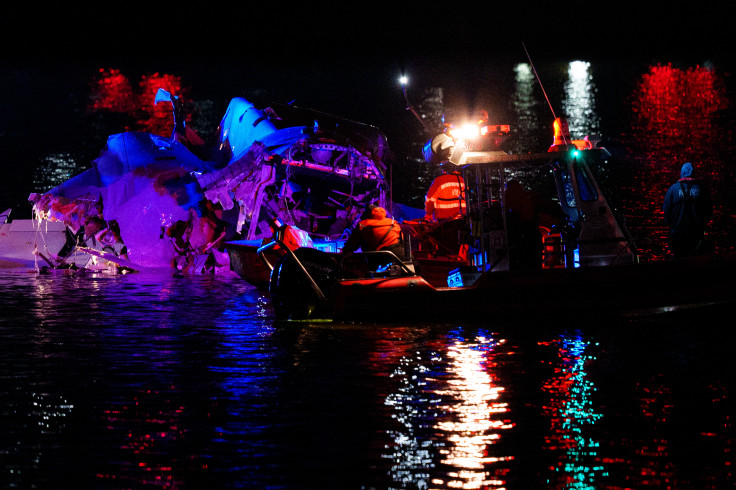
The National Transportation Safety Board (NTSB) released new information about a tragic collision between an Army Black Hawk helicopter and an American Airlines Bombardier CRJ700 Flight 5342 near Washington, D.C., resulting in the deaths of all 67 individuals aboard both aircraft. Described as the deadliest aviation tragedy in the U.S. in the past 20 years, it occurred on January 29, 2025.
The NTSB disclosed its findings during the first session of a three-day hearing, presenting video footage captured by closed-circuit television that captured the collision. According to People, this footage illustrated the dire situation over the Potomac River at the time of the accident.
Details emerged from collected records. It was established that at 8:48 p.m., the American Airlines flight was on its final approach to Ronald Reagan Washington National Airport, coming from Wichita, Kansas, on course to land on Runway 33 after air traffic control instructions. Twenty seconds before impact, an automated alert in the cockpit of Flight 5342 warned, "traffic, traffic," lending insight into the last seconds for the pilots.
The cockpit transcript revealed Captain Jonathan Campos and First Officer Sam Lilley initially unaware of the impending danger. It was only milliseconds before the crash that they became alarmed, breaking into expletives as they attempted to lift the airplane to avoid disaster.
The helicopter crew, composed of Chief Warrant Officer Andrew Eves and Co-Pilot Captain Rebecca Lobach, reportedly planned to use visual separation to navigate the congested airspace. Unfortunately, due to an altimeter malfunction, they believed they were flying 100 feet higher than they were. Eves instructed Lobach to descend, believing the helicopter was above the 200-foot limit.
Adding complexity to the tragic circumstances, air traffic control had warned the helicopter crew about the approaching passenger airplane twice — first three minutes and then 90 seconds before the crash. Despite these warnings, the instruction from air traffic control allowing the helicopter to pass behind the jet for visual separation did not reach the crew.
The NTSB acknowledged that air traffic controllers were also under scrutiny due to staffing issues on the crash's day, potentially compounding the chaotic airspace scenario that evening.
There were reports of exhaustion among the helicopter crew, adding concern regarding decision-making that ill-fated night. The absence of position reporting technology on the helicopter exacerbated the difficulties in managing and navigating the airspace effectively.
After the mid-air collision, both aircraft fell into the Potomac River. The crash site underscored the complexities of managing heavily trafficked airspace around major airports. This collision, in the heart of the nation's capital, is a stark reminder of the complexity and critical nature of air traffic management, pilot awareness, and communication. As the NTSB continues its hearings and reveals more of its investigative findings, the aviation community and the public await further answers to understand fully what went wrong that night over the Potomac River.
© 2025 Latin Times. All rights reserved. Do not reproduce without permission.




